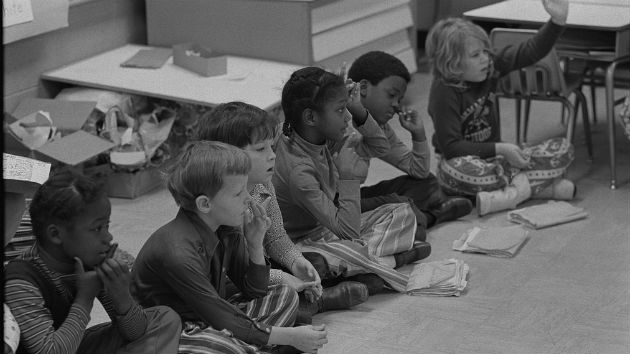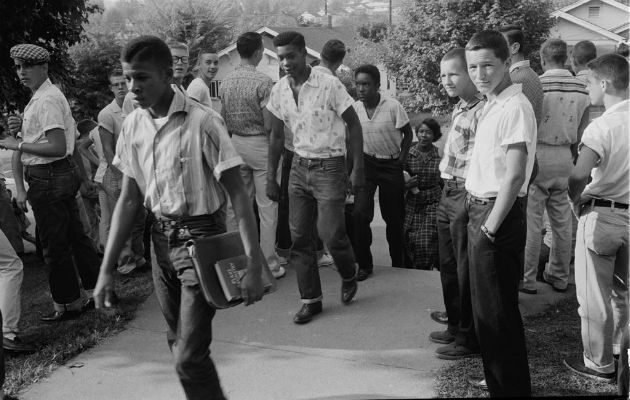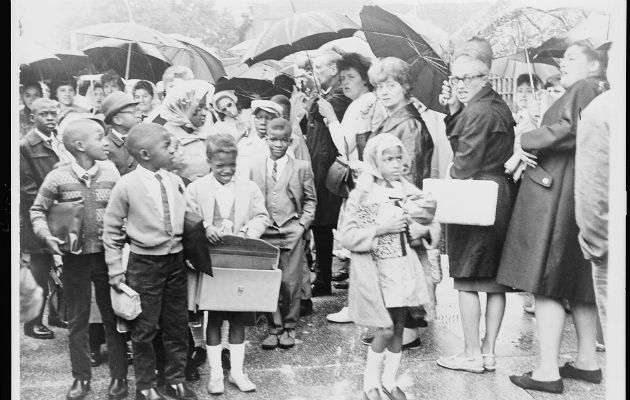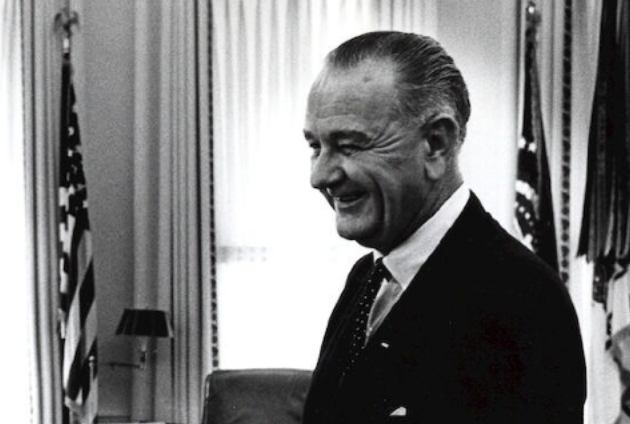
A 1973 Charlotte, N.C., first grade class that was integrated through a school busing program. Warren K. Leffler/Library of Congress
Sixty years ago, the Supreme Court ruled that segregation in schools was unconstitutional. The changes required by Brown v. Board of Education decision were not immediate, but they were profound and lasting. Today, schools in the South are the least segregated for black students in the nation.
Of course, that doesn’t tell the whole story. In honor of the Brown anniversary, UCLA’s Civil Rights Project released a report that analyzes the progress of desegregation since 1954. According to the report, starting in the 1980s, schools began to ditch integration efforts and shift focus to universal education standards as a way to level the playing field for students in unequal schools. In 1991, when the Supreme Court ruled that school districts could end their desegregation plans, it put the nail in integration’s coffin.

Today, the picture of American schools is far different than what the 1954 ruling seemed to portend. The UCLA report notes that Latino students are the most segregated in the country. In major and midsize cities, where housing discrimination historically separated neighborhoods along racial lines, black and Latino students are often almost entirely isolated from white and Asian students—about 12 percent of black and Latino students in major cities have any exposure to white students. Half of the students who attend 91 to 100 percent black and Latino schools (which make up 13 percent of all US public schools) are also in schools that are 90 percent low-income—a phenomenon known as “double segregation.” And the Northeast holds the special distinction of having more black children in intensely segregated schools (where school populations are 90 to 100 percent minority) in 2011 than it did in 1968. In New York state, for instance, 65 percent of black students attend schools that are intensely segregated, as do 57 percent of Latino students.

Even in the South, where Brown made such a profound difference, school integration is being rolled back. The chart below shows the percentage of black students attending majority white schools in the South over the last 60 years. You can see the progress made after Brown—and how rapidly it’s dissolving.
















